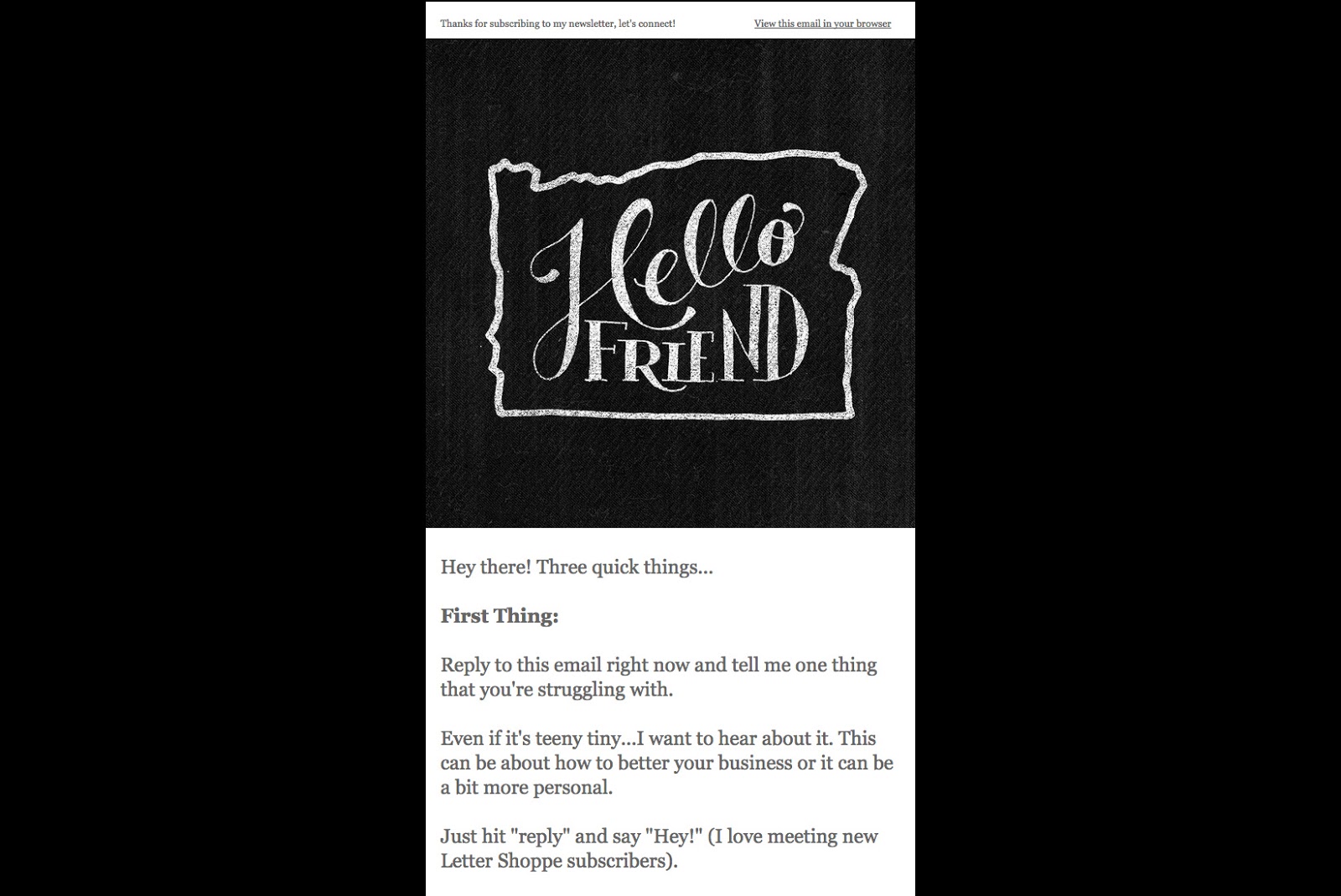Topics:
Lead GenerationSubscribe now and get the latest podcast releases delivered straight to your inbox.
5 Tips For Getting the Most Out of Your Welcome Emails

Apr 14, 2015

 Remember how awkward the first day of school was? Or your first day on a new job?
Remember how awkward the first day of school was? Or your first day on a new job?
I don’t know about you, but whether it was kindergarten, college, or my first full-time job, adjusting to a new situation and environment has never been easy.
Everyone needs that first orientation event or first friend to invite them in and make them feel like they belong. Adjusting to a new service or product is no different.
When people first discover your brand, they may be a little lost or unsure of what to do next, but with a carefully-crafted welcome email, you can provide them with the comfort and guidance they seek when starting a new venture.
What is a Welcome Email Anyway?
A Welcome Email is the automatic message someone receives when they first sign up for your blog, newsletter, free trial, community, etc.
In most instances, it’s the first email a contact receives from your company, setting the stage and expectations for all future communications (No pressure, or anything.)
Since it is expected by the recipient (triggered by an activity), the Welcome Email also usually delivers an open rate 4x higher than that of other email campaigns, but don’t let this intimidate you.
With the five hacks I’ve outlined in this article, you’ll not only “delight” your new contact, but also give them the information they need to get the most out of your offering and begin their journey further down the sales funnel.
1. Get Personal
Introductions can be awkward.
One of the easiest ways to make someone feel more comfortable in a new situation (in this case, their engagement with your brand) is to break the ice. In order words, show them you’re not strangers by using personalization.
A 2013 study by Aberdeen found that on average, personalization increases email click-through rates by 14% and conversion rates by 10% so, in your welcome email, show your reader that you already know something about them.
Greet them using their first name or incorporate other information you have gathered about their interests and life including:
- Job Title
- Location/State
- Company
- Age
- Gender
2. Tell Them What to Expect
A great way to start building trust with your new contact is by being transparent and setting the expectations. In your Welcome Email, tell people upfront what they can expect from your upcoming messages and your interaction in general.
Consider disclosing or reflecting on important information such as:
- Email frequency
- Possible topics/promotions
- How they can contact you
- Your privacy policy
- Their option to unsubscribe
This transparency will ease a lot of the qualms people have about giving up their email address and also lay the foundation for a trusting partnership moving forward.
3. Tell Them What to Do Next
I signed up, now what?
Signing someone up for your services without providing any information on how to utilize them is like setting a freshman loose on campus without a map or itinerary.
Use your welcome email to give guidance and take your new contact through the next step in your nurturing process.
Tell them how to use your resource, service, or product (like Tumblr does below) or even provide them with a special discount or promo code to use on a future transaction.
Overall, the goal is to draw your reader back to your website and prompt them to take action. The last thing you want as a marketer is to have someone convert on your website and get stuck at the top of the funnel by never returning.
Try incorporating a service tutorial or “next step” call-to-action like these:
- Confirm your email address
- Complete your profile
- Shop now
- Tell a friend
- Learn more
- Start pinning
4. Allow Engagement
Nothing screams automated email like seeing “No Reply” as a sender in your inbox.
As a Welcome Email is usually the first direct interaction you have with your contact, make sure to ditch the robot and connect personally, especially if you are a small to medium-sized business.
Send your Welcome Email from the name of an actual team member and allow replies. In fact, encouraging replies to your Welcome Email will help build trust with your reader and give you access to valuable feedback from an already engaged audience.
Not to mention, it will also help humanize your brand and “delight” people early on in the nurturing process.
Consider this example from LetterShoppe:

LetterShoppe is the personal website of a hand-lettering artist and logo designer named Dina Rodriguez that my IMPACT colleague, Marcella Jalbert, follows.
Dina hits an engagement homerun in her Welcome Email to her blog subscribers, writing:
“Reply to this email right now and tell me one thing that you’re struggling with….This can be about how to better your business or it can be a bit more personal. Just hit ‘reply’ and say ‘Hey!’ (I love meeting new Letter Shoppe subscribers).”
Dina’s message is simple, clear, caring, and most importantly, it makes you want to do business with her.
It’s also important to mention that her message isn’t just talk. Marcella dropped her a line and tells me she got a quick and friendly response back. (Take notes, people.)
5. Optimize for Mobile Viewing
This one is almost a no brainer, but it has to be said. With mobile devices accounting for 51% of email opens today, not optimizing any email, let alone your Welcome, is like shooting yourself in the foot.
The chances of your Welcome Email being opened on a phone or tablet are extremely high and if it cannot be comfortably viewed or read, all of your earlier efforts (personalization, offering next steps, engagement, etc.) will most likely be in vain.
You should also keep in mind that a first impression is a lasting one.
If your Welcome Email is difficult to open or view, this hardship may stick out in your reader’s memory when they see another message from you arrive in their inbox, so make sure to set time aside and test your email across all browsers and devices.


Order Your Copy of Marcus Sheridan's New Book — Endless Customers!
